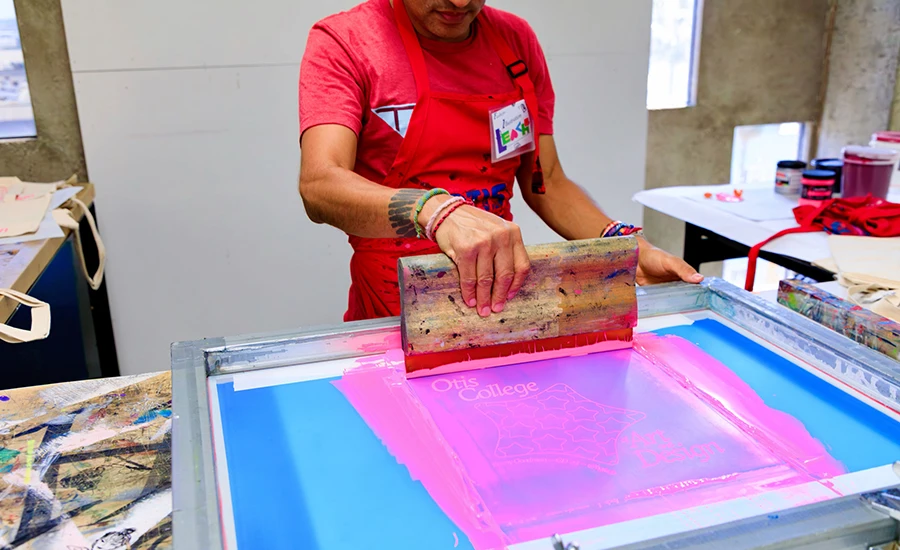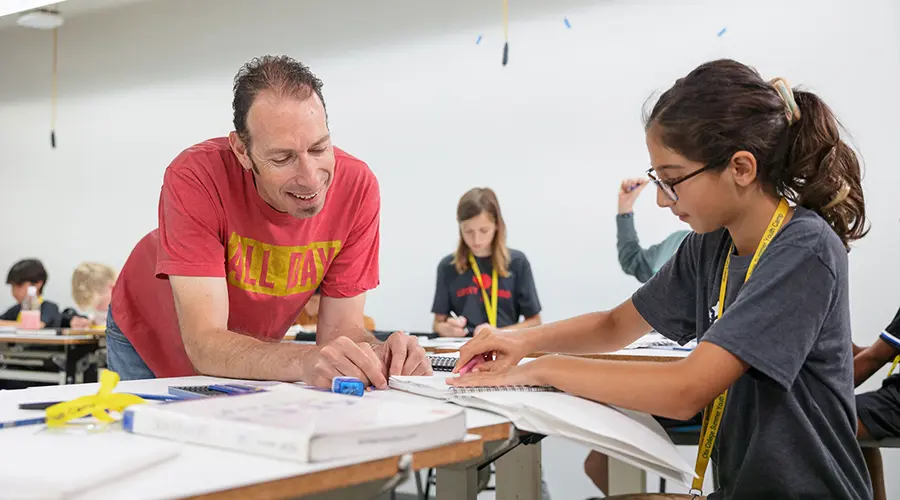Certificate Programs to Start—or Grow—an Art and Design Career
Otis Extension students graduate ready to work as graphic designers, junior level designers, interior design coordinators, and more.

Otis Extension’s certificate programs are designed with both emerging creatives and established professionals in mind. Spanning graphic design, animation, web design, fashion, and interior design, among other creative fields, the certificate programs blend hands-on technical instruction with industry best practices and career preparation.
By enrolling in one of Otis Extension’s certificate programs, students can gain the confidence and competence to excel in a wide range of fields, setting the stage for successful and fulfilling careers. Here is just a sampling of the many jobs that certificate students are prepared for upon graduation.
Animation Certificate
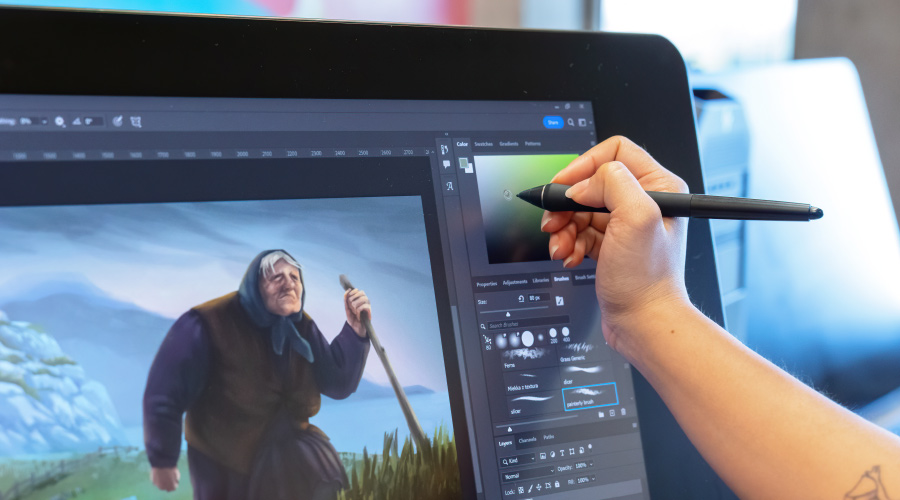
Character Designer
With the strong foundation in life drawing, 2D and 3D animation, and color theory that students acquire in the Animation Certificate program, they can launch a career as a character designer. This essential role in animation involves developing and creating the characters that are used in animation projects—these skills translate to creating characters in game design and live action film as well. They help bring characters to life using descriptions from the director and the script, realizing a character’s physical appearance, traits, personality, and costume, all of which begin as sketches but evolve into facial expressions, poses, and movements. Animation Certificate graduates know how to develop a character through a series of drawings, from multiple perspectives and sometimes in multiple styles.
They also are equipped with a professional-quality portfolio demonstrating conceptual, design, and technical proficiency for an entry-level position in the animation industry. Their well-rounded background ensures they know how to create in-depth stories, characters, environments, visual effects, and animated graphics as well as use industry-standard tools like Autodesk Maya and Adobe Creative Suite. The working professionals who teach the courses also weave standard industry practices into the curriculum, ensuring graduates can secure entry-level work in animation and have a foundation from which to build careers as concept, visual development (visdev), or storyboard artists.
Learn more about the Animation Certificate program, including required classes, tuition, and how to register.
Fashion Design

Assistant Designer
The fashion industry is glamorous, to be sure, but it also requires practical skills, not just a stylish flair for putting an outfit together. In Otis Extension’s Fashion Design Certificate program students learn a variety of skills that will make them an invaluable assistant designer for a clothing brand.
Modeled after Otis’s award-winning BFA Fashion Design program, the curriculum includes instruction in fashion illustration, draping, patternmaking, sewing, and apparel design. Students learn how to bring their ideas to life, from concept to reality, by developing stylistic approaches, production techniques, digital tools, and the essential skills required for success in today’s fashion industry. Courses in color theory, 2D animation, textiles, Illustrator, Photoshop, and marketing round out the learning process, enabling graduates to pursue careers in fashion but also retail, theater, film, and textile design, where their skills are easily transferable.
Class assignments lead to the completion of a professional-level portfolio. While in the program, students take advantage of learning from experienced professionals and artists, connecting with a network of creatives, and receiving career support, including career counseling, internship advising, and employer networking opportunities.
Learn more about the Fashion Design Certificate program, including required classes, tuition, and how to register.
Fine Arts
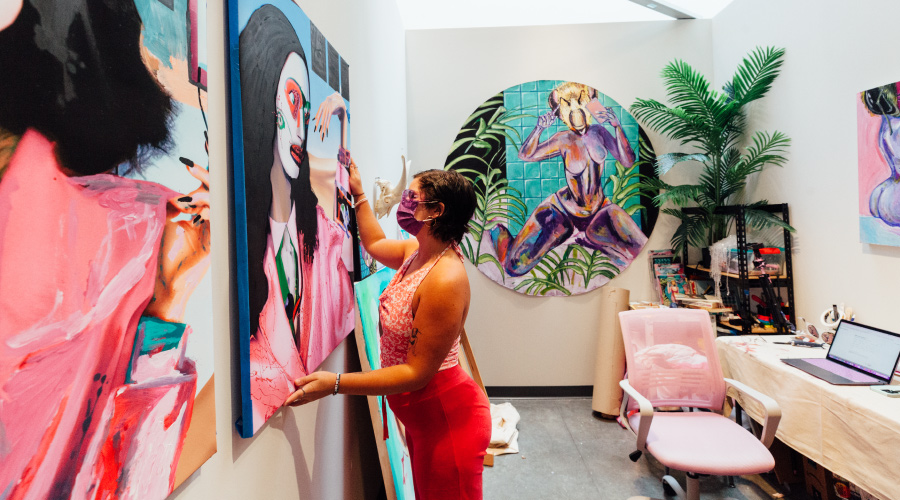
Working Artist
Artists have never been in such high demand as now. In addition to creating work that engages audiences and provides insight into their world, artists are often looked to for their creative problem-solving skills in such industries as entertainment, marketing, and education.
In Otis Extension’s Fine Arts Certificate program, students refine their studio practice as a fine artist while building a portfolio that can be used for professional opportunities, including exhibiting and selling their work, or for pursuing related jobs or postsecondary art studies. A strong emphasis is placed on helping students develop their personal artistic vision, facilitated by a close working relationship between students and faculty—many of whom are practicing artists themselves.
Courses in such mediums as painting, sculpture, ceramics, photography, and woodworking ensure students have access to the tools, and adopt the technical skills, to see their artistic visions come to life.
Learn more about the Fine Arts Certificate program, including required classes, tuition, and how to register.
Game Design

Junior Level Designer
Level design is a part of game design that focuses on the creation of levels, stories, environments, and gameplay. In this sense they work in the center of a Venn diagram of story, engineering, and game design. Their work is what guides the player through the game, creating a flow and pace that keeps them engaged. In order to excel as a junior level designer or advance to more senior and managerial roles in this field, candidates need a strong foundational understanding of game level layouts, game architecture, gameplay, and storytelling. This is balanced with technical skills, including scripting languages, 3D animation, user-experience, and workflows.
In Otis Extension’s Game Design Certificate program students gain hands-on experience in industry-standard game engine tools like Unreal—Otis Extension is an Unreal Academic Partner—Autodesk Maya, Blender, Pixologic ZBrush, and others. They learn basic scripting, technical processes, and interactive storytelling and writing for games, including visual prototyping. The industry professionals who teach the program’s courses share business best practices central to the game design profession, including workflows and work environments. Students develop a professional resume and portfolio that shows this range of technical and interpersonal skills.
Learn more about the Game Design Certificate program, including required classes, tuition, and how to register.
Graphic Design
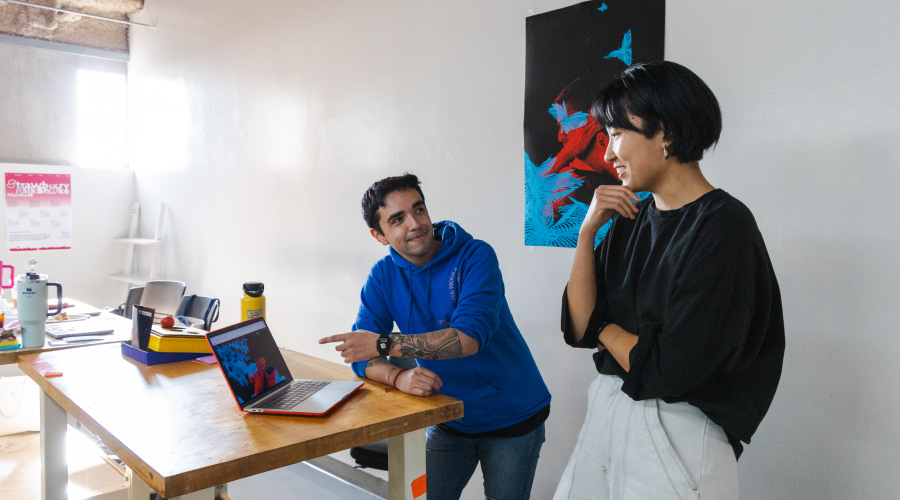
Junior Graphic Designer
A graphic designer has the flexibility to work in a variety of industries, creating visuals that can be used for marketing, traditional and social media, sales, branding, packaging, and advertising, among other applications. Graphic designers can produce physical work—from print collateral, magazines, or posters, to billboards and environmental graphics—or digital work ranging from mobile app and signage to social media graphics and film title design. In this sense, their roles seamlessly combine art and technology to help tell stories and convey information.
Students in Otis Extension’s Graphic Design Certificate program take a suite of courses—from color theory, typography, and advertising to branding, motion and print design—that prepare them for entry-level work as a junior graphic designer. They learn how to create and utilize logos, symbols, and letterforms successfully, as well as the advanced application of typography for still, motion, and interactive platforms. By the program’s end they will know how to work fluidly in both digital and print, and their portfolio will demonstrate a mastery of Adobe Creative Suite (Illustrator, Photoshop, InDesign, and more).
Learn more about the Graphic Design Certificate program, including required classes, tuition, and how to register.
Interior Design

Interior Design Coordinator
Working as an interior design coordinator is a great entry into the multifaceted world of interior design. The job entails supporting the interior design team with project requirements, design concepts, cost estimates, materials sourcing, and communicating with the client as the project progresses. The ability to manage project logistics—that of the design principle as well as contractors, vendors, and the client—and assist with all phases of the design process is key to success in this important role.
To get hired as an interior design coordinator, candidates need to blend organizational and technical skills—including software like AutoCAD and Adobe Creative Suite—and possess an ability to prepare drawings and models. They also need the interpersonal skills to articulate design ideas and solutions. They can work for residential or commercial design firms.
In the Interior Design Certificate program, students learn art and design fundamentals, including drawing, composition, color theory, and 2D and 3D design. They create design strategies for residential, commercial, and public spaces using color, light, space planning, themes, and furnishings. They also learn such technical skills as drafting and industry-standard programs like AutoCad and Sketchup. All class assignments lead to a portfolio that, by program’s end, exhibits a student’s understanding of spatial design, 3D modeling, lighting design, surface material, and furniture selection, as well as their own creative point of view.
Learn more about the Interior Design Certificate program, including required classes, tuition, and how to register.
Surface Design
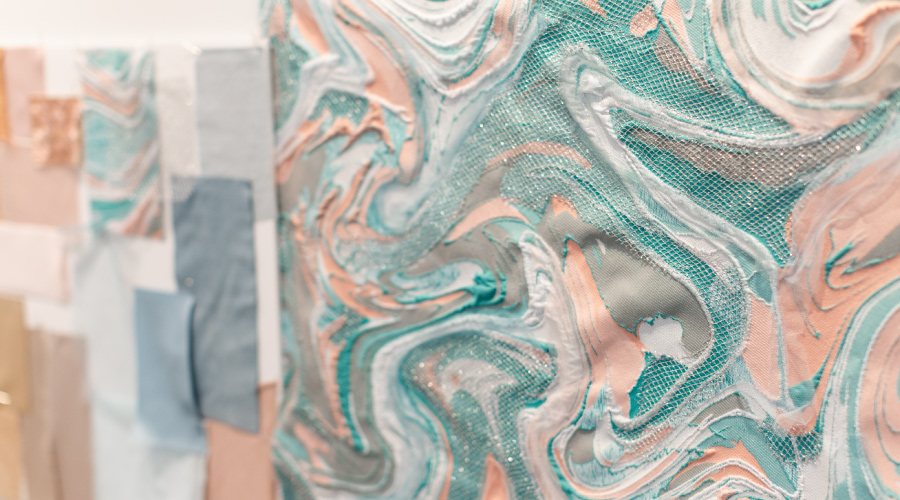
Textile Designer
Surface design is an often misunderstood field. Any object covered in a repeated pattern—think florals, polkadots, stripes—is likely the work of a surface designer. Their creativity is found everywhere, on clothing and shoes, home goods like bedsheets and wallpaper, stationery, wrapping paper, and even auto upholstery.
A textile designer specifically designs patterns for fabric, which can be done manually through techniques like block printing or shibori (a Japanese tradition similar to tie-dye) or digitally using programs like Adobe Illustrator or Photoshop. Textile designers can work for textile manufacturers, design studios, interior design firms, or even on their own, either as a freelance textile designer or by licensing their patterns to manufacturers.
Students in the Surface Design Certificate program at Otis Extension learn the creative and technical skills to design and execute prints and patterns, including how to complete a cohesive collection. With the program’s recently updated curriculum, students develop skills and knowledge to reflect a broader surface design industry including textiles and fabric, fashion apparel, home furnishings, wall and floor coverings, decorative papers, and a broad spectrum of everyday products. By program’s end, students have a portfolio that illustrates their mastery of traditional and digital design methods as well as production techniques.
Learn more about the Surface Design Certificate program, including required classes, tuition, and how to register.
UI/UX for Web Design

Junior UX Designer
User interface and user experience—commonly known as UI/UX—are two key components of how a website or mobile app is understood and functions for the people interacting with it. For example, if a consumer can’t figure out how to purchase something online from a brand’s website, the culprit could be poor UI/UX design. A junior UX designer works with a team of product managers, developers, and UI designers to ensure a seamless look and intuitive feel of a website or app. They accomplish this through an iterative process that involves user research, wireframes, prototyping, and A/B testing.
Students in the UI/UX for Web Design Certificate program at Otis Extension learn how to create digital designs using multiple assets and visual formats, incorporating design standards, accessibility best practices, basic coding, and common workflows. Their foundation in color theory, typography, and graphic design is complemented by mastering such industry-standard tools as Sketch, Figma, Mirro, and Adobe Creative Suite. The working professionals who teach the courses in this program share industry best practices relevant to careers in UX design, UI design, and web design.
Learn more about the UI/UX for Web Design Certificate program, including required classes, tuition, and how to register.
Related News
